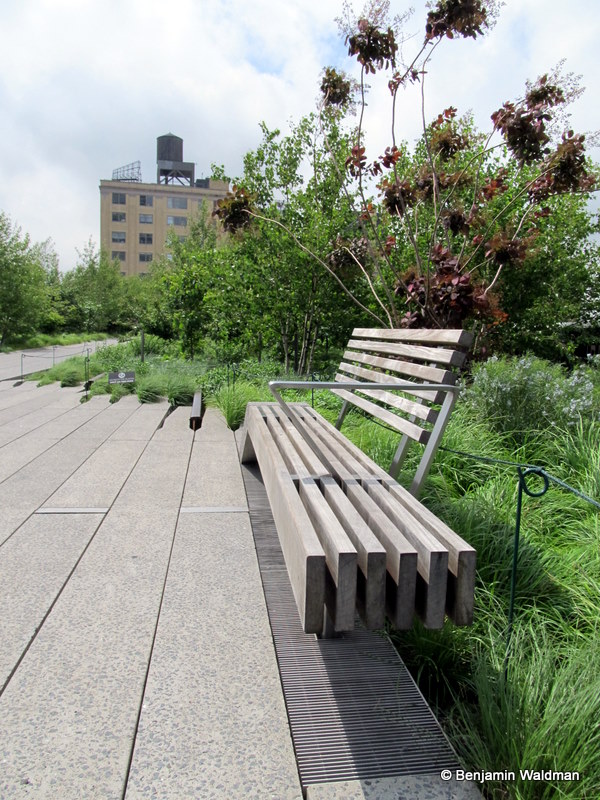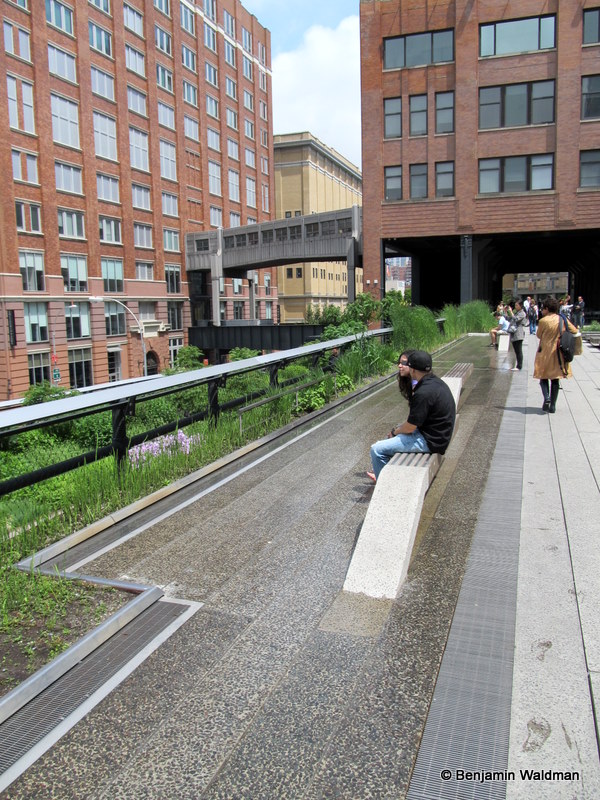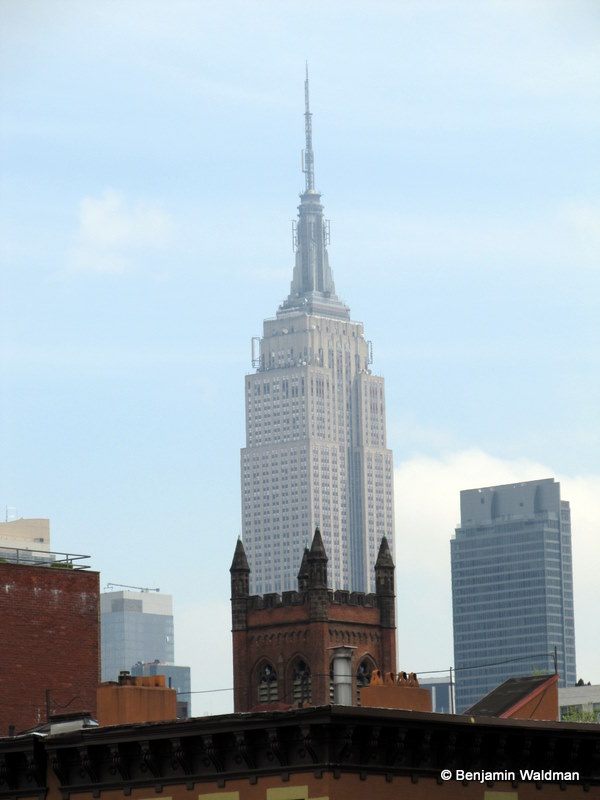The Southern terminus for the High Line is located at Gansevoort Street:
Visitors to the High Line currently experience the first section of what will hopefully be one-third of a grand elevated park. Section 1 of the High Line runs from West 12th Street to West 20th Street just west of 10th Avenue. Section 2, which begins at West 20th Street, will open in June and Section 3 is off limits to all but the most intrepid visitors.
The High Line was built in the 1930s through a public-private partnership to service the industrial buildings in the West Side Improvement District. The city constructed an elevated railway mid-avenue to ensure the safety of pedestrians and to eliminate the traffic, smoke, and blight caused by the city’s other elevated train lines. The High Line, which originally stretched from Spring Street to 34th Street, ran through numerous buildings including the Bell Laboratories and the Nabisco factory buildings. The High Line’s lifespan as a successful railway was short. By the 1950s, the growth of the trucking industry brought about the demise of the train. As a result, in the 1960s the southern end of the High Line was demolished and by 1980 the High Line saw its last train.
In the mid-1980s, property owners called for the demolition of the elevated railway. Luckily they did not succeed thanks to the Friends of the High Line and other community organizations who worked tirelessly for years to save the High Line for future generations. Inspired by the Promenade Plantée (or Coulée Verte), an elevated park on an abandoned railroad track in Paris, the Friends of the High Line realized that the High Line would be a perfect site for an a new type of green space. With the successful advocacy of the Friends of the High Line, Section 1 opened to the public as a park in June 2009. Due to the success of Section 1, other cities have begun researching the feasibility of turning their abandoned railroad tracks into parks, and New York has proceeded with turning the remaining sections of the High Line into a park.
Below is a photographic tour of Section 1 of the High Line highlighting the balance the park strikes between its industrial past and gentrified present.
The park’s architecture was inspired by and incorporates the High Line’s industrial past:


























